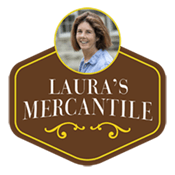Saplings and seedlings, sprigs, and sprouts oh my!
Trees all around the world are starting their lives this very week. Humankind celebrates this holiday of the future of these trees as they sequester carbon, create unique micro-ecosystems for our forests and woodlots, provide shade to rotationally graze livestock and stand tall while fighting soil erosion and being natural windbreaks.
Arbor Day reignites interest in trees for many. Trees of all ages, sizes and species play a role in our daily lives whether we stop to recognize it or not.
New trees at Mt. Folly addresses several key tasks on this organic farm. New growth trees create the hope of what is to come and the future amount of all carbon it will sequester in its lifetime. Additionally, they provide shade for cattle and goats as they are rotated around the farm spreading their fertilizer(manure), and these new trees in crop fields provide very strategic soil erosion prevention on the edges and will one day grow into windbreaks. Windbreaks on organic farms are very important on boundaries, if neighbor farms are not organic, it is essential to prevent the spread of GMO pollen and potential herbicide contamination.

Let us not forget the importance of old growth trees, they only exist because they started as new trees with hope. Old growth trees are argued by some scholars to sequester more carbon than new growth, but more research is being done to confirm that theory. In effective management of trees in our case, woodlots in pastures and crop fields, requires removing dead or dying trees that have fallen to the emerald ash borer.
This invasive pest is sweeping the nation, and according to the USDA, the emerald ash borer has destroyed tens of millions of ash trees and can be found in 30 states. This beetle creates dead or dying trees that need to be removed from woodlots to make room for new and old remaining trees to fill in the canopy and maximize that woodlot’s amount of carbon that can be sequestered.

So, what do we do with the dead ash trees? Not all dead trees can be removed, so they rot and decompose back into the soil and create growing opportunities for mushrooms, worms and microorganisms. The ones we can remove get sawed into building materials and any excess gets turned into biochar.
Creating biochar has high expectations of mitigating climate change by removing that carbon (wood) from the carbon cycle. Everyone is familiar with the water cycle, but just like it, carbon cycles through our ecosystem in a similar way. Making biochar is basically the process of making charcoal by igniting wood in a low or no oxygen space for an extended period of time. The end result is a stable form of charcoal or carbon that will not return to participate in the carbon cycle for hundreds, if not thousands, of years.
More about biochar to come…
Thank you for celebrating the mission of Arbor Day with Laura’s Mercantile and Mt. Folly Farm.
www.MtFollyFarm.com
www.LaurasMercantile.com
www.WildcatWillysDistillery.com





